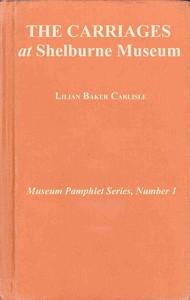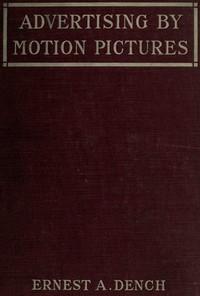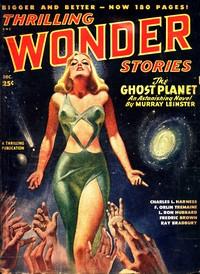|
|
Read this ebook for free! No credit card needed, absolutely nothing to pay.Words: 25292 in 13 pages
This is an ebook sharing website. You can read the uploaded ebooks for free here. No credit cards needed, nothing to pay. If you want to own a digital copy of the ebook, or want to read offline with your favorite ebook-reader, then you can choose to buy and download the ebook.

: The carriages at Shelburne Museum by Carlisle Lilian Baker - Shelburne Museum; Carriages and carts Exhibits; Carriages and carts History@FreeBooksThu 08 Jun, 2023 THE CARRIAGES PUBLISHED BY THE SHELBURNE MUSEUM SHELBURNE ? VERMONT COPYRIGHT 1956 BY THE SHELBURNE MUSEUM, INC. SHELBURNE, VERMONT PRINTED IN THE UNITED STATES OF AMERICA BY THE LANE PRESS, BURLINGTON, VERMONT In the 1900 United States census, there were listed 4,571 vehicle-constructing concerns. They employed 126,000 men and paid yearly wages to the amount of ,000,000. Fifty years later one or two specialists still manufacture a limited variety of vehicles, but during our lifetime the carriage trade has vanished. Persons now living rarely conceive of themselves as a part of history and seldom make provisions for the perpetuation of examples and data of their era. Although most of the carriages that once crowded the roads have disappeared, some fine examples still exist in America on large estates in hay-filled barns and dusty carriage houses, and it is to be hoped that these few remaining vehicles will be rescued and placed in museums where they will be preserved for the generations that come after us as living mementoes of our past. Even the printed material, old carriage maker's catalogues, plans, illustrated magazines, scrapbooks, wall charts, technical and account books--once present in every carriage maker's shop, has all but disappeared. This material is of great value to the researcher, librarian and curator at museums which have made provisions for its preservation. Persons owning any of these documents would be performing an act of public service in offering this material to museums, libraries or historical societies so that it too can be kept intact. "Setting up" a fine carriage in the last century was quite different from purchasing a fine automobile today. Considerable knowledge was required as to style of harness, liveries, purpose, details and customs. The description of one of the most costly late 19th century stables here in the United States reads like a tale from the Arabian nights. The town coach barn of this owner contained a coach, a brougham, a hansom, a runabout and an opera wagon, but the carriage house at his country estate was awe-inspiring. It sheltered dozens of vehicles of every sort, and a corps of stablemen was employed to maintain these vehicles in first class condition. In 1905 this collection was broken up and auctioned off to the hundreds who came and went during the days of the sale. Newspaper accounts of the day said that they were bewildered by the display of the victorias, the park drags, the skeleton breaks, the two hundred sets of harness, the magnificent monogrammed blankets for the horses and all the rest of the accoutrements. The "carriage parade" was a daily event in every major American city and New York's vehicles thronged over the ten miles of fine carriage roads in and around Central Park. Every afternoon between the hours of four and five, fashionable society of New York "took the air." East Drive from the Mall south to Fifth Avenue and 59th Street was lined with spectators, and in their polished carriages, attended by their immaculate servants, the ?lite drove back and forth, passing and re-passing each other. It is said that the first time they met each other, they bowed ceremoniously, the second time they smiled, and the third time they looked away. When warm weather came, society moved out of the city en masse, and their carriages went along too. The summer carriage parade at Newport, Rhode Island was reputed to be even finer and more glittering than the New York "promenade on wheels." "The carriages of America are so different from our own and from those of Europe that they require special attention. It is quite possible that in the future their style may greatly influence carriages in all parts. The first noticeable trait in them is lightness.... Americans have adopted some of the shapes of Europe and the European mode on constructing the under-carriages, retaining their own method of making the pole and splinters, as giving greater freedom to the horses. "The cheapness is attained by making large numbers to the same pattern, by the use of and by the educated dexterity of the American workman, always ready to adopt any improvement." Horse-drawn vehicles have played a vital part in the lives of civilized peoples, and that period cannot pass for long without demanding the attention of research scholars whose basic interest is to record activities of the past for the benefit of the future. Free books android app tbrJar TBR JAR Read Free books online gutenberg More posts by @FreeBooks
: Advertising by motion pictures by Dench Ernest A - Motion pictures; Advertising@FreeBooksThu 08 Jun, 2023

: 240000 miles straight up by Hubbard L Ron La Fayette Ron Finlay Virgil Illustrator - Science fiction; Space flight to the moon Fiction; Cold War Fiction@FreeBooksThu 08 Jun, 2023
|
Terms of Use Stock Market News! © gutenberg.org.in2025 All Rights reserved.






